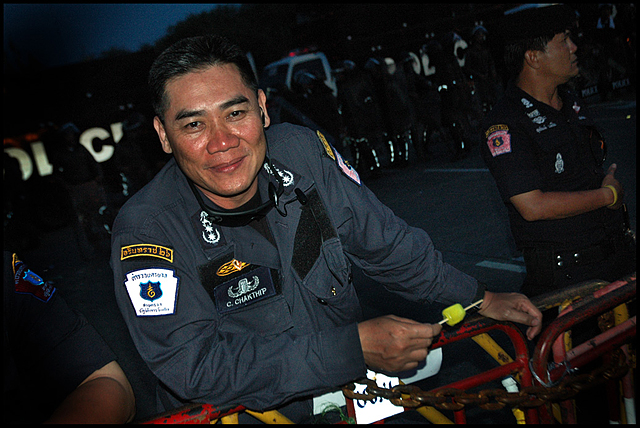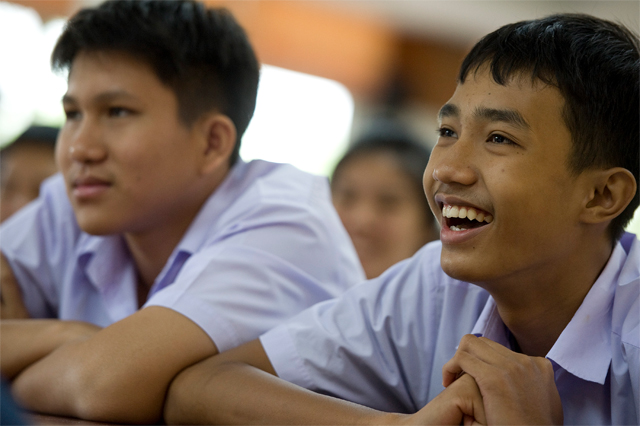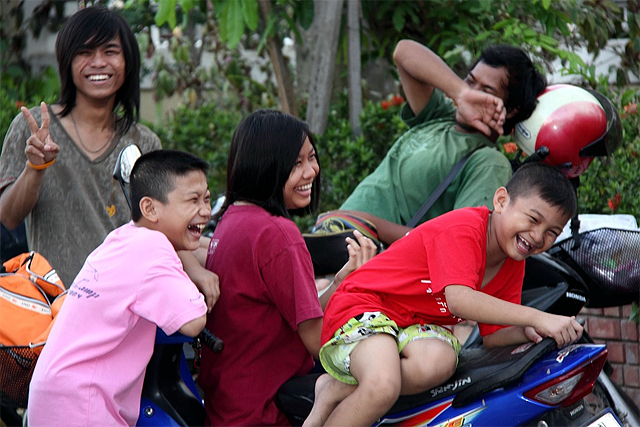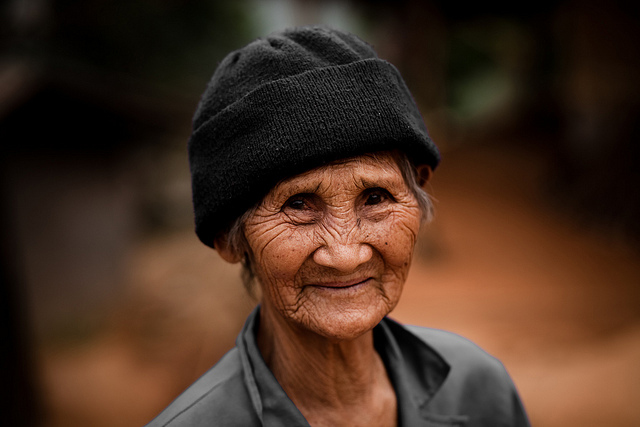According to a recent journal article, Rural Thai male adolescents are just as prone to feelings of anger and expressions of violence as their urban counterparts. The authors of the study, Wongtongkam et al (2016), wrote that the rate of violence seems to be increasing in Thailand, a serious cause for concern.

In 2010, the Royal Thai police reported that in 2009 the rate of arrests of young men in Bangkok had doubled over the previous year and increased by nearly 50 percent for just physical assaults alone. Most of the arrested males were students at vocational educational institutions. The news elicited a lot a public concern but not much was known about the factors that prompted the rise in violent behavior and whether there are different rates of violence among college students in the capital city compared to similar students at rural institutions. Wongtongkam and her associates decided to investigate.
The purpose of their research was to focus on violence among Thai adolescents, particularly young Thai males between the ages of 15 and 19, in both urban and rural settings, and to compare the two groups. Their goal was to assemble baseline information about violent behaviors which would provide policy makers and practitioners more effective ways of reducing violence in Thailand, as well as to allow examinations of differences between rural and urban behaviors related to the prevention of violence. The authors also hoped to provide data about the role of anger in fostering antisocial behaviors and violence.

They conducted their research in nine different technical colleges, five in Bangkok and four in an unnamed city in Nakhon Ratchasima province. The provincial capital, the city of Nakhon Ratchisima, is located about 140 miles northeast of Bangkok in the Isaan region of Thailand. In 2011, the city had 166,000 people while Bangkok had over 8 million. Over 1,700 students were invited to participate from the two cities; however, some did not want to be involved or were disqualified for several reasons. The majority of the participants, nearly 58 percent, had a good or a very good grade point average.
The researchers used several different self-reporting measures with the participants. One, a self-report of violent behaviors, included such activities as gang fights, robberies, sexual assaults, and attacks with weapons. Participants reported how frequently they had gotten involved in those activities over the previous six months. Another measure assessed violent offenses by asking respondents to report how often in the previous six months they had hit, pushed, shoved, threatened, yelled, called mean names, or threatened with a weapon. A third asked the participants to rate how frequently they had experienced elevated feelings of anger.

Almost surprisingly, the students in Bangkok and in Nakhon Ratchasima province reported very similar results in the occurrences of interpersonal violence, with no significant differences between the two groups, though slight differences did occur. For two of the measures of actual violence, participants from Bangkok did report more instances of chasing another person with weapons and injuring someone with weapons. On the other hand, the rural respondents reported higher expressions of anger than the people in the big city did, with correspondingly higher results in the suppression of anger as well.
The authors noted that the most prevalent form of violence among the students is teasing and name calling, both forms of bullying. This form of violence, they argued, is a type of instrumental aggression used to gain social status and control. They argued that controlling bullying can reduce anger and aggressive behaviors.

One difference between the capital and the rest of the nation is that people in Bangkok were more likely to own weapons, perhaps for self-defense. The authors suggested that because there does not seem to be much difference between anger and violence in rural versus urban Thailand, the country can and should focus on formulating a national-level program to address the issues.
They concluded that the similar levels of violence in the rural province and in the capital may be due to the fact that development throughout the nation has reduced the economic disparity between urban and rural people. Conversely, they suggested, the higher levels of reported anger in the province may be due to the rapid urbanization, which may have induced greater “health-risk behaviors,” as they put it rather adroitly (p.2296).

Unfortunately, the authors do not refer to Phillips (1965) and his analysis of the ways the Rural Thai of Bang Chan village more than 50 years ago dealt with feelings of anger and expressions of aggression. Presumably, that would have been beyond the scope of their research. In any case, Phillips found that the Rural Thai villagers had no toleration for direct, face-to-face aggressiveness. Not only were there no overt displays of aggression, the villagers had numerous devices that prevented it from being expressed—such as giggling and laughter when making requests, using intermediaries to soften dealings, walking away from people at the slightest possibility of trouble, and acting in an interpersonal manner of flattery, self-effacement, and comedy.
They were clearly aware that aggressiveness is always a latent possibility, which prompted them to maintain an aura of face-to-face pleasantness. Their constant gossip was a form of aggression, though people did not necessarily believe the nasty things they heard about others. A more formalized form of aggressiveness—still not face-to-face—allowed people to express their hostility to others in circumspect ways. For instance, a man would call a dog using the name of another man, within his hearing range, and claim it was a slip of the tongue. The other might retaliate by stealing the first man’s boat for a few weeks and then returning it, after causing a considerable amount of anxiety.

Phillips concluded that interpersonal aggressiveness was very weak among the Thai villagers of his time because everyone was so extremely careful to not provoke others. It was hard to get worked up over minor things. Further, he argued, since others would not respond to a show of anger, there was little incentive to displays of aggressive feelings. The anticipation of the suppression of hostility in effect dampened hostility in everyone. It was hard to get angry at people with whom one does not have strong emotional relations.
The research by Wongtongkam and colleagues is significant for showing the relative equality today between the rates of violence in Bangkok and in Nakhon Ratchisima. It’s a shame that the authors did not go farther by examining whether those bedrock Thai values that Phillips examined still persist among the rural people. Is it just the fact that they are more urbanized now, have more material goods, and experience the tensions of urban people everywhere? Or is the acceptance of violence in Nakhon Ratchisima unique to that province? More research is needed to fully explore the fate of peaceful values in rural Thailand.
Wongtongkam, Nualnong, Paul R. Ward, Andrew Day and Anthony H. Winefield. 2016. “The Relationship between Exposure to Violence and Anger in Thai Adolescents.” Journal of Interpersonal Violence 31(13): 2291-2301